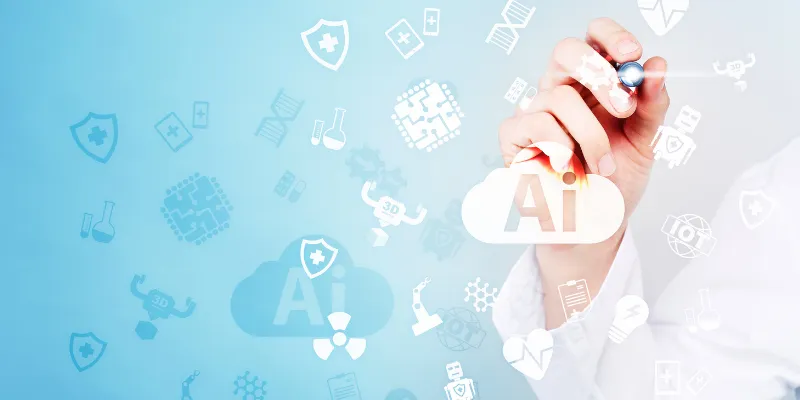Enhancing Clarity: Understanding AI and ML
Today, Artificial Intelligence (AI) has taken the spotlight, and select few players have become good at providing this architecture as an API, like OpenAI.
With the rise of AI, there has been a daunting aura created among SaaS startups. Every emerging trend tends to create a wave, which often leads to herd mentality. Last year, the buzz revolved around Web 3, and now artificial intelligence (AI) has taken the spotlight.
While Generative AI is great, what beyond that?
Any AI before the invention of ‘transformer’ architecture is traditional AI. Since the 1950s, the progress in AI can be carved into the ice age (1950-1980), stone age I (1980-1995), bronze age (1995-2011), etc. The last big shift was in 2012 when deep learning became popular.
Transformers are as impactful in building systems as the creation of virtual machines was in laying the foundation of the cloud in 2009. Architecture change impacts the cost of building applications. Lower cost directly leads to increased competition. Business risk, therefore, is that you deal with increased competition.
Tech stack changing from MEAN to TOVL
When architecture changes then the technology stack changes. People distinguish the apps built on traditional AI from those built on the new architecture by referring to them as LLMApps or FMApps (large language model apps or foundation model apps).
A select few players have become good at providing this architecture as an API, like OpenAI. It is also established that real good players can build several killer apps on top of this. Dall E, ChatGPT is the most popular of them all.
When computers are commodities, no one builds their own infrastructure such as data centres. They build their apps on top of the AWS cloud. When AI is a commodity, then no one will build their own AI teams. AI-focused apps can be built without spending $50 million in booting an AI system ground up.
This results in stack change and more and more applications will be built. What this change means is that your tech team has to become good at learning this new stack. Tech teams mastering the new stack will reduce the cost of you building AI-powered applications.
How do they buy?
Founders should also ask what is changing other than the tech stack. Most founders and product leaders find the 'jobs to be done’ framework useful to address this question. In building SaaS applications, another useful question that becomes important is ‘how do they buy’.
Everything in a SaaS application can be a commodity, the only thing that is not is the founder’s deep understanding of how his target customer makes a buy decision. The job of the SaaS product and go-to-market team is to align as closely as possible to who and how they make buy decisions in an enterprise.
Underlying architecture change does not immediately change how people use and buy tools within enterprises. Indeed, a lot of people are paying for and trying out ChatGPT. At least half of those are also playing OpenAI and similar APIs to see what workflow they can impact using the foundation model-based AI components. What and how they buy has not changed in a big way. At least not yet.

Representational Image
Having a natural language user interface is now becoming a table stakes expectation, but that is not yet making any customer switch to buying differently. Is it making them curious? Yes. Will it continue to be the case? No.
What you and your product leaders should do is get in front of customers and assess how they are changing behaviour, especially around buying decisions in the new foundation model era. Customers are not changing their behaviour yet, so don’t panic in the short term, also don’t be complacent in the long term.
Gen AI is good for B2C, B2B needs Synth AI
Several companies, including OpenAI, call themselves generative AI companies. This term is merely used to mark the difference between the traditional AI approach and the transformer-based architecture approach. Generative means the ability of the AI components to deal with questions that it did not have the data to train on.
Many times, these questions are answered incorrectly but confidently. These mistakes are called hallucinations. When you have an image creation application or are writing prose, such bugs turn out to be features. But when it comes to business use cases accuracy, privacy and confidentiality are important.
When it comes to copywriting and content creation, the distinction between Gen AI and Synth AI becomes crucial. For B2C companies, Gen AI (General Artificial Intelligence) can be a game-changer. Its ability to understand natural language and generate creative content makes it an ideal choice for engaging with consumers on a personal level. Gen AI can analyse customer preferences, tailor messaging accordingly, and create compelling copy that resonates with target audiences.
However, for B2B companies, the requirements are often more complex. This is where Synth AI (Synthetic Artificial Intelligence) comes into play. Synth AI is designed specifically for business applications and excels in tasks such as pricing analysis and positioning strategies. It can process large amounts of data quickly and provide valuable insights that help businesses make informed decisions.
Critical reasoning and first principle thinking effort to comprehend AI and ML technologies can help navigate challenges. This allows us to see beyond the hype and gain a deeper understanding of their applications, limitations, and ethical considerations. It unlocks the full potential while ensuring responsible development. We can navigate the complexities with confidence while leveraging the transformative power of AI and ML.
(Thiyagarajan Maruthavanan is Partner at Upekkha)
(Disclaimer: The views and opinions expressed in this article are those of the author and do not necessarily reflect the views of YourStory.)







